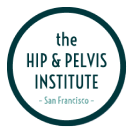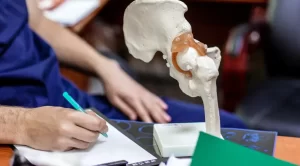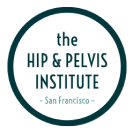Most people blame hip pain on aging, injury, or activity—but your mattress could be the hidden trigger. Night after night, the wrong sleep surface can subtly stress your hip joints, especially if you’re already managing arthritis or inflammation. Unlike daytime movement, sleep positions hold pressure on joints for hours. If your hips hurt more in the morning than the evening, it may be time to examine where—and how—you’re sleeping.
The Mattress–Hip Connection
Your mattress plays a crucial role in how your hips feel each morning, yet this connection is often overlooked. When a mattress is too firm, it can create excessive pressure points on the hip, especially for side sleepers, compressing soft tissues and causing inflammation over time. Conversely, a mattress that is too soft may fail to provide enough support, leading to unnatural hip alignment and strain on the joint capsule and surrounding muscles. These subtle but persistent stresses can aggravate existing hip conditions or even contribute to new pain. Moreover, uneven mattress surfaces can cause the hips to sink or tilt, disrupting spinal alignment and increasing discomfort. This relationship between mattress firmness, body weight distribution, and hip joint health is a delicate balance that requires careful attention, particularly for older adults or those recovering from hip injuries.
Signs Your Mattress May Be Causing or Worsening Your Hip Pain
When hip pain flares up or doesn’t improve, many focus only on medical causes—but the mattress you sleep on can play a surprisingly big role. Here are some signs that your mattress may be contributing to your hip discomfort, often overlooked by both patients and even some healthcare providers:
- Hip pain that feels worse after sleeping but improves during the day
If your hips ache mainly in the morning or after a night’s sleep, it could mean your mattress isn’t providing proper support. This pattern suggests your hips are under pressure for long periods, causing inflammation that eases once you’re up and moving. - Pain localized on the side where you usually sleep
Side sleepers are especially vulnerable to mattress-related hip pain because the hips bear most of the body weight in this position. If the discomfort consistently occurs on one side and matches your preferred sleep side, the mattress’s inability to cushion and relieve pressure there might be the cause. - Feeling “stuck” or unable to find a comfortable position in bed
A mattress that’s either too firm or too soft can prevent your hips from settling into a natural alignment. This subtle sign often leads to restless sleep and repeated tossing and turning, which can worsen hip pain over time. - Noticing your mattress sags or dips where your hips rest
Over time, many mattresses develop low spots or indentations. When these appear under the hips, it causes uneven support that strains joint tissues. This is a hidden cause of pain that often goes undetected because people assume sagging is normal wear and tear. - Waking up with numbness, tingling, or stiffness in the hips or groin
These neurological symptoms can result from prolonged pressure on nerves near the hip joint during sleep. If your mattress isn’t evenly distributing weight, it can compress sensitive areas and create these less obvious signs of mattress-induced hip issues. - Hip pain that persists despite physical therapy or medication
When treatments focused solely on the hip joint don’t fully resolve pain, it’s worth reconsidering sleep surfaces. Sometimes, an inappropriate mattress can undermine other interventions by continually aggravating the hip during rest. - Sudden increase in hip pain after a mattress change
Not all mattress upgrades help. If your hip pain flares after switching to a new mattress, it could be due to differences in firmness, support style, or material—not all mattresses suit every body type or condition.
Mattress Firmness Guide for Hip Pain Relief
Choosing the right mattress firmness is crucial, yet often misunderstood when it comes to hip pain. Many assume firmer is always better for support, but hips need a balance—too firm mattresses can create sharp pressure points that irritate joints, while mattresses that are too soft allow the hips to sink too deeply, throwing the spine out of alignment. The ideal firmness varies based on body weight, sleep position, and even hip shape. Interestingly, small differences in firmness—sometimes just a single comfort rating level—can dramatically change how pressure is distributed across the hips. This subtlety is rarely discussed but can be the key to reducing night-time hip pain without surgery or medication.
Practical Tips to Improve Hip Comfort Without Replacing Your Mattress
Even if replacing your mattress isn’t an immediate option, there are effective ways to reduce hip pain by optimizing what you already have.
Use Targeted Mattress Toppers
Not all mattress toppers are created equal. Look for ones specifically designed to relieve pressure at the hips, such as zoned memory foam or latex toppers with extra padding in the hip area. These can help redistribute weight more evenly without needing a full mattress upgrade. A topper that’s too thick or too soft may worsen sinking, so aim for a medium-thickness layer that balances cushioning and support.
Adjust Your Sleep Position Strategically
Side sleepers can benefit from placing a firm pillow between their knees. This simple adjustment helps keep hips aligned and prevents one side from collapsing too deeply into the mattress. Back sleepers may try a small pillow or rolled towel under their knees to reduce hip joint stress by slightly bending the legs.
Rotate and Reposition Your Mattress Regularly
Mattress wear often happens unevenly, especially around hips. Rotating your mattress 180 degrees every few months can reduce sagging in the same spot and extend the life of your mattress’s support.
When to Consider Replacing Your Mattress for Hip Pain
Most people think about replacing a mattress only when it’s visibly worn out, but subtle signs can indicate it’s time before major damage appears. If you wake up regularly with sharp hip pain that eases during the day but returns every night, your mattress may no longer support your joint health—even if it looks fine on the surface. Another rarely discussed signal is increased stiffness or discomfort after periods of inactivity, such as naps or extended rest, which suggests your mattress isn’t relieving pressure properly. Also, if you notice your mattress no longer “bounces back” or feels uneven despite recent rotation, the internal support layers might be compromised, silently worsening your hip alignment over time. Finally, if you’ve upgraded your bedding accessories (like pillows or toppers) but still experience persistent hip pain, it’s a strong indicator that a full mattress replacement focused on orthopedic support may be necessary.
Conclusion
Your mattress plays a crucial role in managing or worsening hip pain, yet it’s often overlooked. Paying attention to how your mattress supports your hips can make a significant difference in your comfort and overall joint health. If you’re waking up with hip pain or noticing signs that your mattress may be contributing to discomfort, it’s time to take action. For personalized advice and expert care tailored to your hip health, visit SFHips or call us at (415) 530-5330 to schedule an appointment. Let us help you find relief and improve your quality of life—starting with better sleep.









